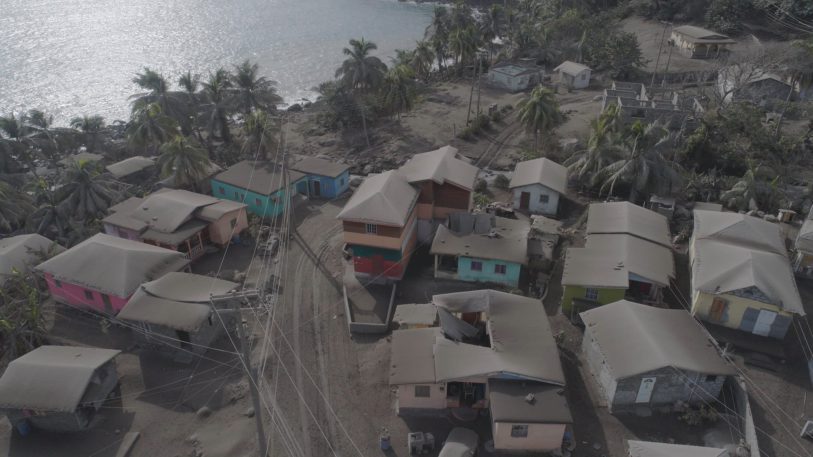Executive Summary
On 8 April 2021, seismic activity at La Soufrière volcano changed significantly when the seismic station closest to the summit began recording low-level seismic tremors. La Soufrière entered a heightened period of activity indicative of a fresh batch of magma either near or approaching the surface. Consequently, Prime Minister Dr Ralph Gonsalves issued an immediate evacuation order for those people living in the most exposed areas and raised the alert level to red, indicating that an eruption was in progress or likely without warning. On 9th April, explosive eruption began and ash plumes of up to 20,000 feet were observed heading east, leading to a request, on the same day, from the Government of Saint Vincent and the Grenadines for international support to address environmental consequences of the volcano eruption.
Major environmental concerns in the aftermath of La Soufrière eruption included: i) the evaluation of lahar risk posed by volumes of ash deposited; ii) the toxicology and chemical composition of the ash and its impact on marine and terrestrial ecosystems; iii) the management of the ash, in terms of cleanup, storage, utilisation, and disposal, considering its physical and chemical properties; iv) the management of other waste streams arising from the event, for example damage to houses, white goods, electronics and waste arising out of the humanitarian response to people’s needs; v) other environmental dimensions of the response and recovery process.
In coordination with the UN Resident Coordinator, the UNEP/OCHA Joint Environment Unit dispatched a team of 12 experts to Kingstown. In response to a request for international assistance from Barbados, two additional experts were deployed to Bridgetown as an antenna of the larger team dispatched to Saint Vincent and the Grenadines, to support on environmental pollution (air and water) and overall environmental response. The team members arrived between 21st and 24th April, for a duration of three weeks.
The main objective of the overall mission was to provide technical advice to local and national authorities to identify, assess and mitigate negative environmental impacts induced by the volcanic eruption. This was done through environmental analysis and sharing best practice to the emergency response and short- to long-term recovery. Technical advice was provided on volcanology, lahars, impact on nature and ecosystems, environmental toxicology, ash management, disaster waste management and environment in humanitarian action.
The mission outcomes showed that there was a good volcano monitoring network, and a National Volcano Emergency Plan has been adopted but one station was destroyed, communication problems exist, and a lack of permanent personnel on site. Impacts of the eruption on marine and coastal ecosystems could not be assessed in detail, but are necessary, since a light-touch assessment indicated the potential for short- and medium-term impacts on nature and ecotourism. The short-term impact on farming is likely to be significant, while some productive areas may be exposed to lahars for many years to come. In accordance, long-term analysis and management of these two ecosystems would be an asset for environmental recovery, and biodiversity. Risks of, and related to, lahars are expected to persist for several years, therefore ecosystem-based approaches to mitigate lahar risk combined with Integrated Risk Management are recommended. Further solutions will need to be encountered to clear and manage ash, while overcoming current issues related to capacity, potential impacts on human and animal health from remobilisation of ash due to inadequate storage. Air quality directly impacts human health and is currently not monitored, although the Pan American Health Organization (PAHO) is developing monitoring systems, subject to funding. Significant disaster waste and plastic (due to the emergency response) need to be managed. Finally, the intervention highlighted the potential for strengthening the integration of environment into the response and recovery process of this emergency and future emergencies in a way that generates environmental enhancements and underpins sustainable development.
